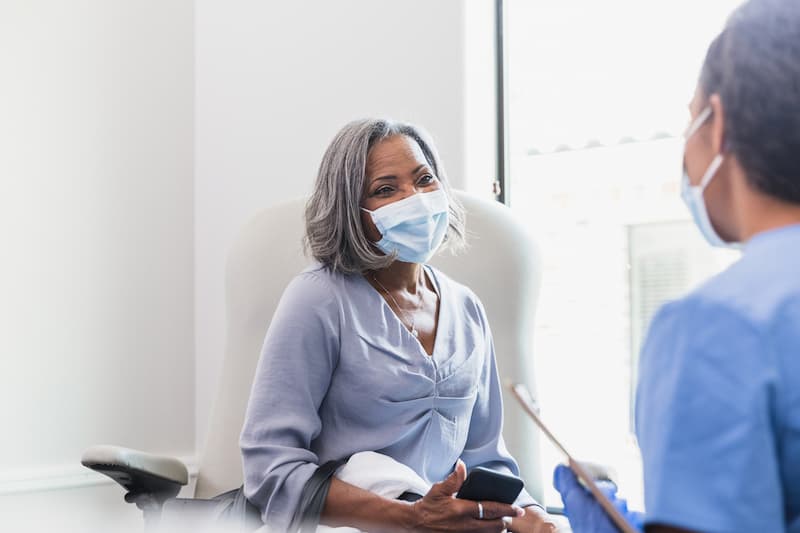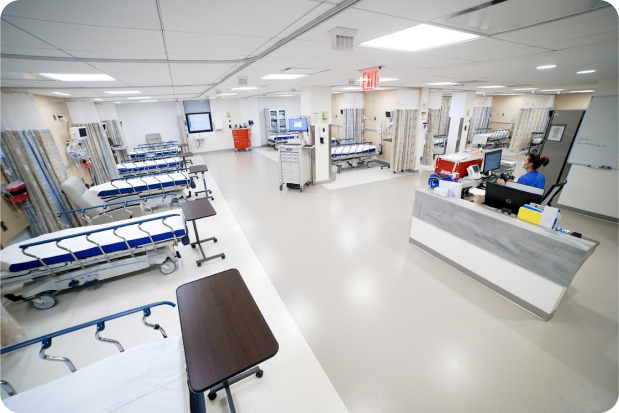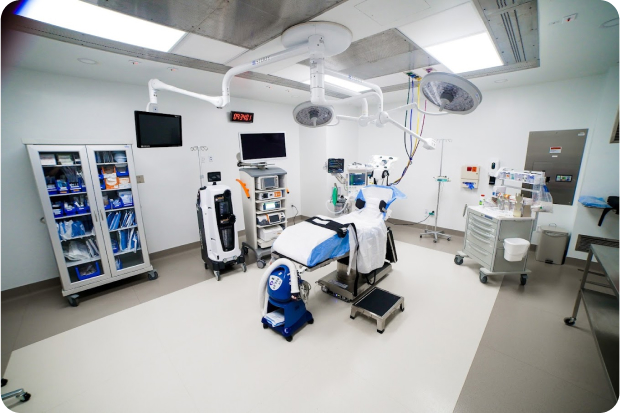 OUR LOCATIONSCall to book (212) 604-1300
OUR LOCATIONSCall to book (212) 604-1300
 OUR LOCATIONSCall to book (212) 604-1300
OUR LOCATIONSCall to book (212) 604-1300

Back pain is a common condition and can range from dull and aching to sharp and stabbing. According to experts, around 80% of people will experience some sort of back pain at some point in their lives. On the other hand, nausea is the feeling of wanting to vomit. The two conditions are not mutually exclusive and each can happen on its own. However, there are lots of instances of back pain and nausea that can occur at the same time.
Since these conditions are very common and not necessarily alarming even if they occur at the same time, when should upper back pain and nausea be a cause for concern? You need to distinguish if you are experiencing pain related to intestinal or digestive issues, in which the pain can radiate to your back, or other factors such as pregnancy, which is also another example since a woman experiences morning sickness and back pain as common symptoms.
Infection can cause gastroenteritis, which leads to pain and inflammation in your stomach. These infections include salmonella or norovirus. This condition can cause intense stomach cramping that extends to your back. In the worst cases, it can cause you to throw up so hard and frequently to the point that your stomach muscles and back will become sore. This infection usually goes away on its own, but go to the hospital if you continue vomiting after 24 hours and develop sunken eyes and other signs of intense dehydration.
When you have a kidney stone or infection, you will feel pain on either side of your middle back. You can also have nausea along with it as well as pain that radiates down to your groin. Most kidney stones will pass on their own and can be dealt with using pain medication. But a kidney infection or even urinary tract infection is another thing because it can spread to other parts of your body. See your doctor when you experience fever, chills, or painful urination.
In this case, pain starts in the upper right part of your stomach and then will radiate to your back. Pain that gets steadily worse after months could be an indication of cirrhosis or liver cancer. If the pain is the type that slowly gets worse or comes on suddenly, it could be gallbladder disease or a gallstone problem. The organ sits just under your liver. Gallbladder and biliary colic attacks bring sharp and intense pain in the upper abdomen that usually happens after eating.
Ulcers are wounds that appear in your stomach, intestines, and other digestive organs. These wounds can bleed and bring intense upper abdominal pain, especially after eating. Some experience nausea along with the pain. Peptic ulcer or deeper ulcers are the ones that cause back pain. Ulcers are usually remedied by antacids and dietary changes. Some feel a difference when they change positions after eating.
Most of the time, back pains can be described as a mere annoyance, especially if it’s just mild to moderate pain. But what if it’s the type that gets you sidelined for days and you are practically useless when the pain is in full force? You need to know how to differentiate the pain you can shrug off from pain that your doctor should be looking at.
These pain types may not need a visit to your doctor:
Anyone who’s held an office job is bound to have even a little back pain every now and then. By now, we all know the consequences of sitting on your bum for hours due to your regular nine-to-five. Upper back pain is mostly because of poor posture and a lot of us are guilty of slouching most of the time, hence the thoracic spine pain.
Also, sitting in front of your computer and staring at the screen can shorten your chest muscles and pull your upper back muscles. This results in muscle spasms between the shoulder blades which can disrupt your work. Associated pain in this category includes nerve root pain, shoulder pain, and mid back pain.
Unless your pain becomes too great for you to ignore, posture-related pain can be solved by over-the-counter pain relievers. You should also make an effort to make your workstation at the office as ergonomic as possible to make it kinder to your spinal cord and cervical spine.
It’s common to feel your muscles around the neck and shoulders or between the shoulder blades as stiff as a rock during those times that you are so tense. This is why massages are effective because they relax your muscles and can undo the knots in your tight spaces, even if it’s just temporary.
Managing your stress can make things easier for your back and brain. Aside from mental stress, intense exercise and sleeping in an improper position can jam those muscles in your neck.
These pain types DO need a visit to your doctor. Better safe than sorry, as they say.

If your upper back pain is still persistent as heck even if you’ve tried practically everything, from massages to a spanking new mattress, then it could be a sign of something serious, such as a lung tumor (although it’s rare). We’re talking about the kind of pain that wakes you up at night. Advanced lung cancer may contribute to bone pain, according to the American Cancer Society. Other signs that go with your upper back pain, such as chest pain, weakness, and unexplained weight loss require your doctor’s undivided attention.
Digestive and intestinal issues such as kidney stones are notorious for abdominal bloating and abdominal pain that radiates to your upper and lower back. If you have kidney stones, you will feel severe pain in your side and back, just below your ribs. This is further confirmed if your urine is brownish or reddish in color. If the pain is on your right side under your shoulder blade, it may be a gallbladder issue, which you need to get checked quickly as well.
Other conditions in this category, which can cause nausea as well, include menstrual cramps, pancreas problems, GERD, endometriosis, chronic pancreatitis, acute pancreatitis, and appendicitis. If it’s the latter, head to the emergency room right away because you may need to get immediate surgery.
We’re talking about the kind of fatigue that you can’t ignore and can’t be solved by a series of rests. This could be a subtle sign of a heart attack, especially if it comes with other symptoms such as nausea, back pain, and shortness of breath. Gone is the stereotype image of the heart attack symptoms in which you immediately clutch your chest and just collapse on the floor. Have your blood pressure checked too right away.
If you feel upper back pain along with weakness or numbness in your arms and legs, your doctor may check for a possible slipped disc, also known as a herniated disc. It’s a neurologic injury that happens when you lift something too heavy for you using your back instead of your legs. In some cases, it could be just arthritis. Disc herniation in your lower back can also irritate the nearby sciatic nerve, resulting in painful symptoms and weakness that gradually radiates in one of your legs.
This could mean an aortic aneurysm or a tear in the wall of your aorta, which is the largest blood vessel in your body. It runs in the back of your chest and tearing can result in chest or back pain. It could also be a sign of stroke too. Both situations need immediate medical attention.
As if the pain on impact isn’t bad enough, it gets worse each second after it happened. This is what usually happens when you had a nasty fall or when a heavy object fell on your back. This kind of pain can signal a broken rib or vertebral bone. The onset of pain can be moderate to severe, but wait till you get up (if you can somehow manage it). The sensation intensifies even with just an inch of movement. Needless to say, this situation needs immediate medical attention.
Severe back pain that comes with fever, plus tingling or numbness in your arms, can be a sign of a spinal infection. It doesn’t happen often, but you’re more at risk if you are obese, immunosuppressed, or have diabetes or cancer. Your doctor will ask for X-rays, CT scans or MRI scans to rule it out. In some cases, you may have to check in the hospital to get intravenous antibiotics.
So you were in a car crash and you managed to walk away seemingly fine because you’re not feeling excruciating just yet. But the payback can happen after some time. You may have gone through a whiplash – a sudden and violent back-to-front jerk of your head – during the accident. This can create tears and inflammation of the muscles and ligaments in your neck and upper back. Schedule a visit to your doctor if you’re having dizzy spells, neck pain, and fatigue along with your back pain.
If you’re having trouble breathing and having severe pain when you try to do it deeply, seek urgent medical care. It happens rarely, but you want to rule out the chances of having a punctured lung, which could be caused by an injury.
If you feel extreme pain everytime you take a deep breath, head to the emergency room as soon as possible, especially if you also have trouble breathing and this happens after a long plane trip or car ride, or after surgery. It could be pulmonary embolism, in which blood clots break off from a deep vein in your arm and leg. It then travels to your lung and gets wedged in the blood vessels. This results in poor blood flow, inflammation, and lung tissue death. If you’re feeling faint and start coughing blood, call 911 right away.
For mild to moderate cases and you don’t have serious underlying conditions, muscle strain, back pain and nausea can be remedied by anti-nausea medications such as dolasetron (Anzemet) and granisetron (Granisol). If you’re pregnant, get your doctor’s approval before taking these. For back pain, there are over-the-counter pain medications, such as ibuprofen and acetaminophen. These can make nausea worse though so again, check with your doctor if that’s the case.
When you’re nauseous, you may have a hard time keeping solid food down your stomach. To keep you hydrated at least, take small sips of water or clear liquid, such as Gatorade or any other drinks that contain electrolytes. Good old ginger ale can work wonderfully as well. Then ease your stomach with small servings of bland food, such as gelatin, clear broth, and crackers.
If the discomfort remains after 24 hours and your back pain is unrelated to an injury, you need to have it checked by your doctor, especially if it’s accompanied by these symptoms:
You don’t have to wait for your pain to reach excruciating levels to have it checked out. Prevention is always better than the cure. New York Pain Care can find out if your pain requires serious medical attention. We are a trusted name in dealing with all sorts of pain, from cervical vertigo and spinal stenosis to compression fracture. Our wide variety of services include physical therapy, sports medicine, chiropractic care, and medical massage. Call us to set an appointment and let us help you deal with your pain.
Learn more: How to Deal With Upper Back Pain After Sleeping






